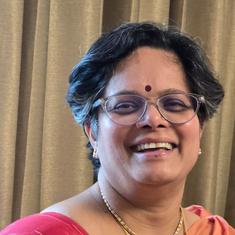The Bharatiya Janata Party openly courted a majority – calling its campaign Mission272, for the number of seats to form the government by itself and also by insisting in its advertisements that people not just vote for BJP, but give it a majority as well. To everyone’s surprise, for the first time since 1984, it actually got there.
It achieved this by converting entire states over to its cause. Every single legislator in the states of Rajasthan, Gujarat, Delhi, Himachal Pradesh, Uttarakhand and Goa will come from the BJP, a total of 79 Members of Parliament. Meanwhile, Uttar Pradesh, Madhya Pradesh, Haryana, Jharkhand, Chhattisgarh were overwhelmingly saffron, with only a few non-BJP candidates winning a seat or two in each state. Even Bihar’s final count – with 31 of 40 going to the NDA – was lopsided.
The trends wasn’t just confined to the BJP: 37 of 39 MPs from Tamil Nadu come from one party, the All India Anna Dravida Munnetra Kazhagam. Twenty of 21 seats in Odisha went to the Biju Janata Dal and 34 of 42 seats in West Bengal went to the Trinamool Congress.
Aided partly by the first-past-the-post system, this means that there are very few states where there was a scattered verdict, despite all the commentary about a fragmented electorate. Here are the states where there’s still a fight on the cards.
The eternal see-saw: Kerala

The one bright spot for the Congress, not counting the North-Eastern states which elect fewer MPs, also happens to be one of the places where it has ceded space to its principal local rival. The United Democratic Front, which currently runs the state and features a Congress chief minister, held on to 12 of the 20 seats. The Communist Party of India (Marxist)-led Left Democratic Front managed to grab the remaining eight, leaving Kerala once again see-sawing between the Communists and the Congress as it has for decades now.
Three-way split: Punjab

As it turns out, Punjab ended up being the only state where we got a properly scattered verdict of the sort we were told to expect, with trends evident but no clear winner. The state has 13 seats, of which six went to the NDA: four to the ruling Shiromani Akali Dal and the other two to the BJP. Of the other seven, four went to the young Aam Aadmi Party and three to the principal opposition in the state, the Congress, making it a proper three-cornered contest.
Interestingly, the party that scored the highest vote share by far, the Congress with 33.1%, ended up getting the fewest seats.
Second-place battle: Assam

In 2009, Assam had mostly been a straight fight between the BJP and the Congress, with the latter winning seven of the 14 seats and the BJP winning four. The remaining three were divided up by three separate local outfits, Asom Gana Parishad, the All India United Democratic Front (known as the Assam Democratic Front) and the Bodoland People’s Front.
This time around, one party has still bagged half the seats – the BJP – but the remainder has been split up between the AIUDF and the Congress. Each party garnered three seats apiece, with the final one going to an independent.
Clear leaders: Telangana/Seemandhra

The newly formed state barely escapes the "all-or-nothing" category because of the sheer complexity of its fragmented opposition. Eleven of the 17 seats went to the Telangana Rashtra Samiti, the party whose raison d’etre was the creation of the state, putting it very clearly in the pink camp. But the remaining six seats are split off one a-piece between the Congress, BJP, Telugu Desam Party, the Majlis-e-Ittehadul Muslimeen and the Yuvajana Sramika Raithu Congress Party.
Like its newly bifurcated neighbour, Seemandhra barely qualifies as a state with a real fight on the cards, with 17 of its 25 seats going to the TDP-BJP combine. The Chandrababu Naidu-led TDP took 15 seats, while the BJP managed to win two. All eight of the remaining seats went to the YSR Congress, so while the state is tilted firmly towards the NDA, it does have a strong opposition.
Two-and-a-half-horse race: Karnataka

With 17 of its 28 seats going to the BJP, you couldn’t accuse Karnataka of muddying the waters too much. This was the only southern state where the BJP had managed to form its own government and though that had swung back towards the Congress last year, the BJP’s showing made it clear that they are once again the force to beat.
But that doesn’t mean the Congress didn’t put up a decent showing. It managed to pick up nine seats, and moreover earn a vote share of 40.8%, just two points below the BJP’s tally. The state’s third-force, the Janata Dal (Secular) also managed a decent showing, with two seats and 11% vote share.
Source of graphs: Election Commission of India










